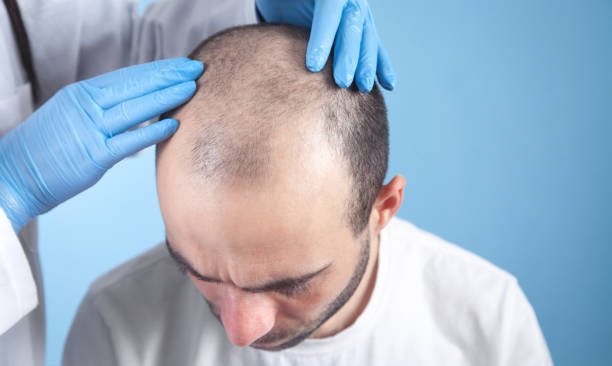Hair transplants are safe and minimally invasive medical procedures. Your surgeon sterilizes the area and uses local anesthetic to numb the scalp (similar to what dentists use). You can request oral sedation if needed.
Shower and shampoo your hair to prepare for the procedure, but avoid using styling products like gels or sprays. Arranging a ride home after surgery and taking time off work is also helpful.
Preparing for the Procedure
What is the hair transplant procedure? Before a hair transplant, physicians will perform a pre-operative evaluation to ensure the patient is healthy enough for surgery and that no conditions could raise the risk of complications. It will typically include blood tests and a physical examination.
The patient will be instructed to refrain from taking specific drugs and dietary supplements that may impair blood flow and impede the healing process following the procedure. Smoking should also be avoided as it constricts blood vessels and reduces the amount of nutrients delivered to the scalp, which is crucial for healthy follicle growth.
Patients should start a gentle scalp massage routine in the weeks leading up to their procedure. It helps regulate blood flow and skin tone and promotes healing. To minimize swelling during recovery, it is also advised that patients sleep on a pillow that elevates their heads and wear loose clothing in the days preceding their procedure.
Using the FUT or FUE technique, a surgical strip of skin containing healthy hair follicles is removed from a part of the scalp that can be concealed. The follicular grafts are then transplanted into the bald or thinning area of the scalp. The physician will use a needle or blade to make small holes in the scalp where the grafts are placed and then insert the follicular grafts into these tiny incisions.
During the Procedure
Before you undergo the procedure, your doctor will give you instructions to follow. These will be very important and can impact how successful your transplant is. For example, to lower your risk of bleeding, you might be instructed to stay away from drugs like ibuprofen and aspirin. Additionally, it would help if you gave up drinking and smoking at least one week before the procedure. These are necessary steps because they will help ensure your body can heal properly.
During hair transplantation, healthy hair follicles from the donor area of the scalp are removed and then transplanted to the bald or thinning areas of the head.
The hair follicles can be removed in various ways depending on your surgeon’s technique. Punch grafts, for instance, involve using a tool that cuts a strip of healthy skin with follicles from the donor site. Other types of grafts are micro-grafts, which include removing individual hairs from the scalp, and slit grafts, which are inserted into slits that the surgeon creates in the scalp.
To help prepare for your procedure, find a comfortable shirt you can wear during the surgery that doesn’t require you to pull it tightly over your head. It will eliminate the possibility of accidentally dislodging or rubbing the grafts once the surgery is complete.
Post-Operative Care
Treating a hair transplant as a surgical procedure is appropriate. You must take extra precautions before and after your surgery to ensure it goes well. It includes improving your overall health and wellness and avoiding certain habits that could interfere with your recovery.
Patients should follow their doctor’s pre-surgery instructions and consult with a medical professional regarding medications that may be taken. Some medicines can affect blood flow and increase the risk of complications during the surgery, so it’s important to know what you can and cannot take. It’s also a good idea to avoid smoking, drinking alcohol, and taking any supplements that your doctor does not recommend.
One month before your surgery, start by massaging your scalp daily to stimulate new hair growth and promote healthy circulation in the scalp. However, it would help if you did not exercise vigorously to increase blood flow to your scalp, as this can cause bleeding during and after surgery. It would help to refrain from wearing hats or other headwear that puts pressure on your scalp for the first week after your treatment to allow your grafts to heal. After this time, you can get back to your regular exercise schedule.
Follow-Up Care
Following the procedure, there is a period where the grafts need to heal. It is a crucial part of the healing process and can impact your results’ success. If you are careful, your follicles may stay the same, leading to less desirable results. To avoid this, you must follow the instructions given to you by your doctor for the first week following your procedure.
For the initial days after your surgery, you must avoid washing the area where the follicles were planted. It can disrupt the follicles, which can cause them to lose their effectiveness. However, you can begin shampooing the rest of your hair a week after your procedure. The scabs that cover the grafts can be loosened by gently rubbing them with your fingertips while shampooing. It is a natural and normal part of the healing process.
Limiting your activities to those that don’t put pressure on the back of your head, such as going to the gym and working out, is also essential. Also, to prevent tan lines or hyperpigmentation of the transplanted follicles, staying out of the sun for at least one month following your procedure is best. However, you can resume all other regular activities, such as cutting your hair, using minoxidil, perming and coloring your hair, and wearing a wig.



